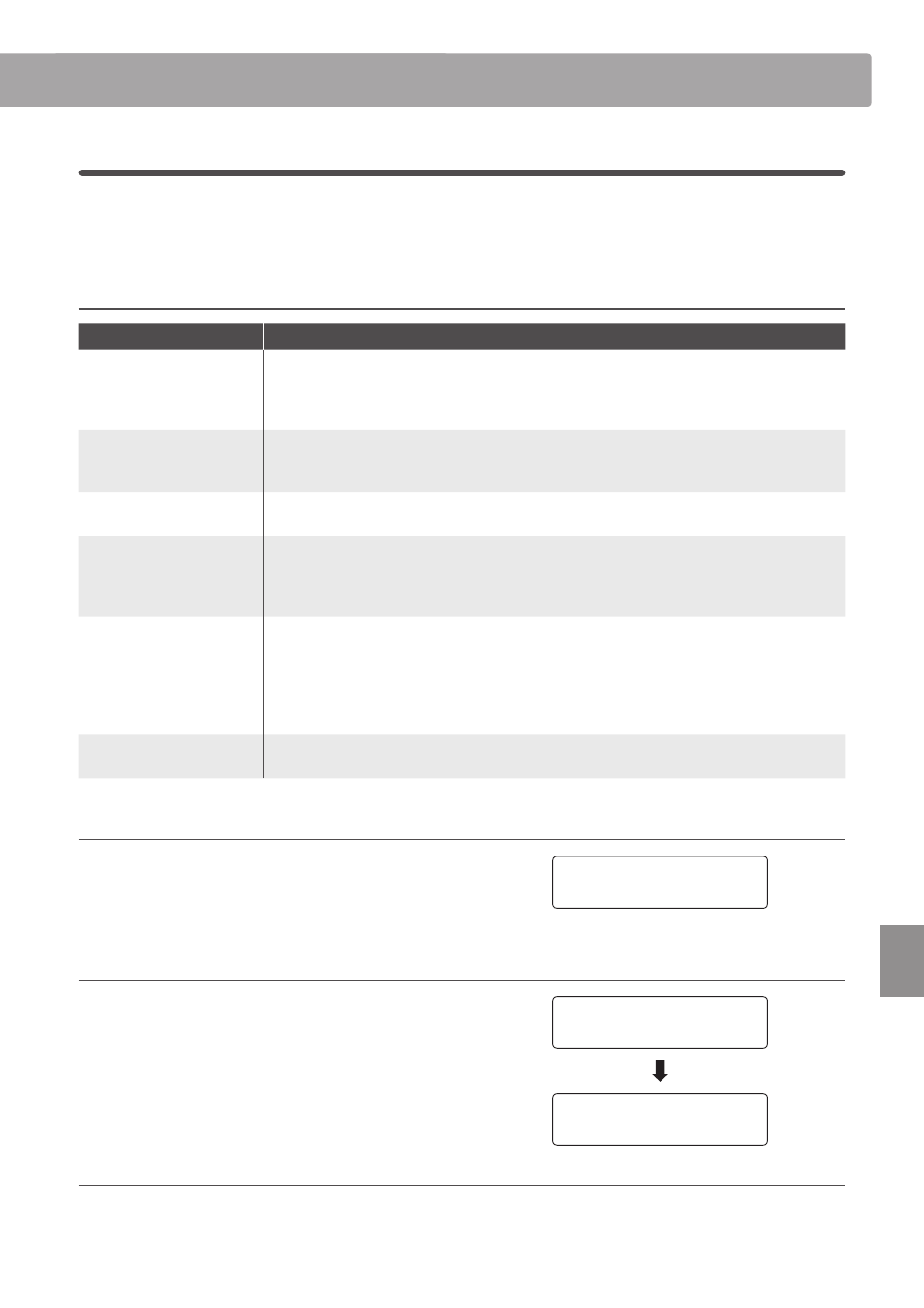Temperament, Set tings – Kawai CN35 Owner’s Manual User Manual
Page 101

101
Set
tings
2-11
Temperament
The Temperament setting allows the tuning system used by the CN35 digital piano to be changed from the modern
‘Equal Temperament’ standard to one of the various temperaments popularised during the Renaissance and
Baroque periods. It is also possible to create customised temperaments using the User Temperaments function.
Temperament types
Temperament type
Description
Equal Temperament
(Equal)
This is the most popular tuning method that divides the scale into twelve equal semi-tones.
This produces the same chordal intervals in all twelve keys, and has the advantage of limitless
modulation of the key. However, the tonality of each key becomes less characteristic and no chord
is in pure consonance.
Pure Temperament
(Pure Major/Pure Minor)
This temperament, which eliminates dissonances for thirds and fifths, is still popular in choral
music because of its perfect harmony. Any key modulation will result in dissonances.
* The key of the temperament, and major/minor setting must be correctly matched.
Pythagorean Temperament
(Pythagorean)
This temperament, which uses mathematical ratios to eliminate dissonance for fifths, is very
limited for use with chords, but produces very characteristic melodic lines.
Meantone Temperament
(Meantone)
This temperament, which uses a mean between a major and minor whole tone to eliminate
dissonance for thirds, was devised to eliminate the lack of consonances experienced with certain
fifths for the Mersenne pure temperament.
It produces chords that are more beautiful than those played with equal temperament.
Werckmeister III Temperament
(Werkmeister)
Kirnberger III Temperament
(Kirnberger)
These two temperaments are placed in between Meantone and Pythagorean. For music with
few accidentals, this temperament produces the beautiful chords of the mean tone, but as
accidentals increase, the temperament produces the characteristic melodies of the Pythagorean
temperament.
It is used primarily for classical music written in the Baroque era to revive the original
characteristics.
User Temperament
(User1/2)
User defined temperament created by raising or lowering the pitch for each semi-tone.
1. Selecting the Temperament setting
After entering the Virtual Technician menu (page 89):
Press the
d or c MENU buttons to select the Temperament
setting.
2. Changing the Temperament type
Press the
d or c VALUE buttons to cycle through the different
temperament types.
* Any changes made to the Temperament settings will remain until the
power is turned off.
* Preferred Temperament settings can be stored to a Registration
memory for convenient recall. Please refer to page 34 for more
information.
3. Exiting the Temperament setting
Press the
d and c MENU buttons simultaneously to exit the
Temperament setting and return to the main settings menu.
2-11 Temperament
= Equal
2-11 Temperament
= Meantone
2-11 Temperament
= Equal